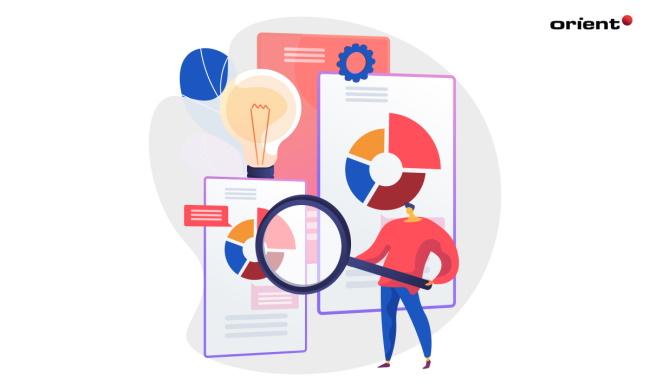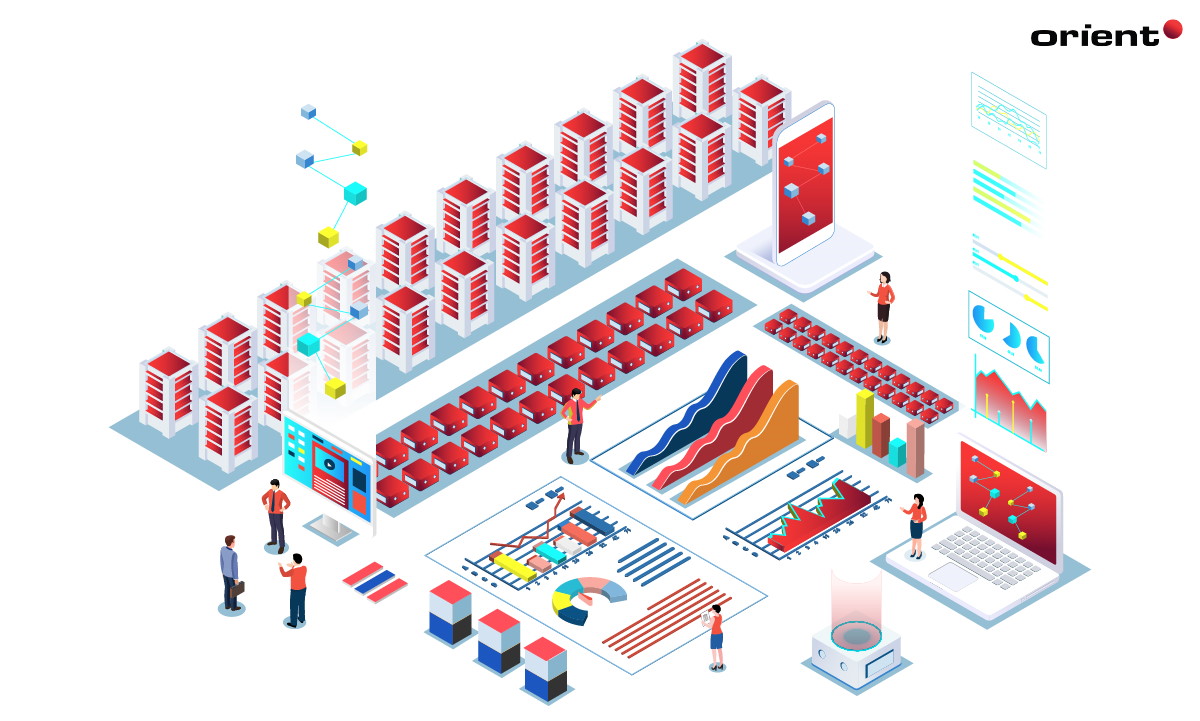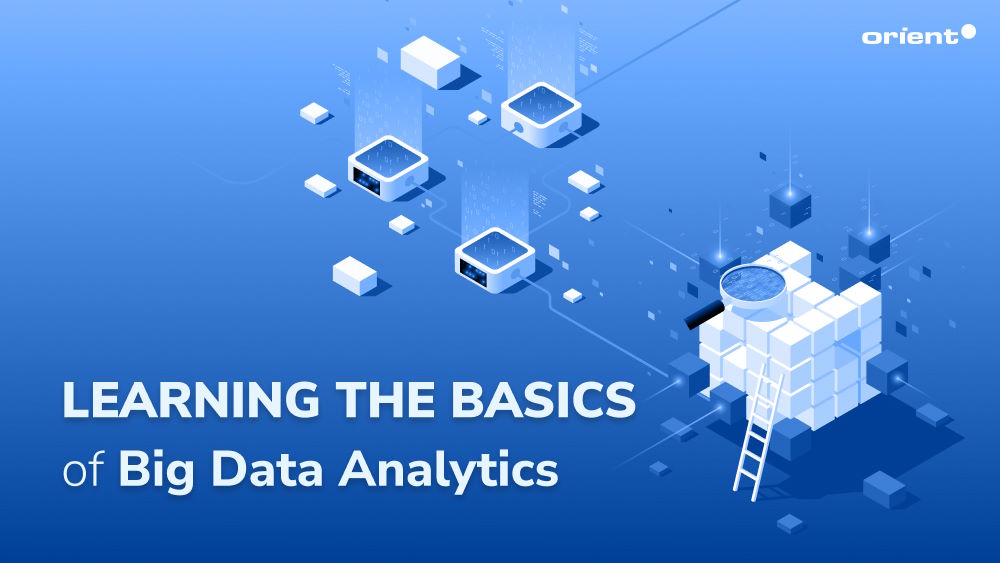Data Analytics Strategies: What They Are, Why They Matter, and the Key Elements to Include

Content Map
More chaptersOrganizations, around the world, across various industries, use big data to make informed decisions and drive positive business outcomes. Netflix, with approximately 220.67 million paid subscribers (as of Q2 2022), uses a custom algorithm, called the Netflix Recommendation Engine (NRE), to recommend personalized content to subscribers. So accurate is the NRE, around 80 percent of subscriber activity is driven by personalized recommendations, and it was so successful that it helped Netflix save over $1 billion per year in customer acquisition costs. Data analytics doesn’t just benefit the online entertainment sector, either. Between 2020 and 2026, the predictive analytics market is expected to grow at a Compound Annual Growth Rate (CAGR) of 24.5 percent, amounting to $22.1 billion in global revenue.
Yet, despite the promise of data analytics, some organizations struggle to harness data to its full potential. A 2019 report from Dun & Bradstreet revealed that the biggest data challenges facing businesses include data privacy (34 percent), processing and analyzing data (24 percent), and ensuring data accuracy (26 percent). In the same report, 43 percent of respondents admitted that, within the past decade, many of their data-led projects had failed. This is where having the right data analytics strategy can help.
What is a Data Analytics Strategy?
A data analytics strategy is a framework that encompasses all data practices. It outlines the tools, people, processes, and rules required to gather, manage, analyze, and act upon data – in a way that helps an organization make informed decisions. A data analytics strategy contains many key reporting metrics, such as specifying the source of the data, the type of data collected, data evaluation methods, and actions taken by the organization based on reports.
It is important to not confuse data analytics with other fields of study, such as data engineering and data science. Data engineers design, build, and maintain the pipelines that gather structured and unstructured data. Data scientists clean and validate the data to ensure it is accurate, usable, and accessible. Then, data analysts analyze the processed data, and help businesses make informed decisions.
Whether you need one or more data specialists depends on your business needs. Do you have large volumes of structured and unstructured data that need processing and interpreting? You’ll need a data engineer to create a data-gathering system, a data scientist to prepare the data, and a data analyst to provide actionable insights. Do you already have a data collection pipeline but swaths of confusing big data and no way to interpret it? You’ll then need only a data scientist and a data analyst. When you approach a data specialist team, they’ll assess your data-related needs and propose a custom strategy to help achieve your growth targets.
Why Does a Data Analytics Strategy Matter?
A data analytics strategy is a great way to drive innovation and user engagement, streamline the app development cycle, and improve the user experience. This applies to many industries. Take the healthcare sector, for example. In France, Intel, in collaboration with the Assistance Publique – Hôpitaux de Paris, the largest university hospital in Europe, built a cloud-based solution to predict the expected number of hospital admissions and patient visits over a 15-day period. The raw data was presented to the hospital administration staff through a secure, browser-based interface, which they could use to optimize staffing levels and resources based on anticipated demand.
Elsewhere, data analytics is helping organizations streamline mobile app development and improve the user experience. When the American insurance company, Progressive, sought to develop a new mobile app, they used data analytics to learn about their customers. The company learned about their customers’ preferred operating systems and devices, and the way in which they interacted with their mobile devices. With these insights, operating system testing time was reduced by 20 percent, and successful mobile app logins increased by 30 percent, resulting in faster development and higher user engagement.
The Key Elements of a Successful Data Analytics Strategy
Designing, building, and monitoring a data analytics strategy is a big job. It requires many vital components and many moving parts. All of these must work together in perfect harmony to achieve desired outcomes. Most importantly, they must align with the organization’s goals, and work towards reaching those unified goals. Here are the key elements that increase the odds of a successful outcome.
Data Governance
Data governance is a set of rules, policies, procedures, processes, and standards that determine how an organization must gather, store, manage, analyze, act upon, and dispose of the data that they collect.
A good data governance framework covers every facet of a data analytics strategy:
- The type of infrastructure and technology to be used
- The people with the authority to handle different data types
- The policies and procedures in place to protect data from unauthorized access, modification, removal, and deletion.
Also, data governance ensures that sensitive data is managed and organized properly, in compliance with relevant industry standards and government regulations, such as the General Data Protection Regulation (GDPR), a regulation that requires businesses to protect the personal data and privacy of EU citizens for transactions that occur in EU member states.
Choose the right analytics operating model
In data analytics, the operating model determines the staffing requirements for all data activities. The three most common operating models are Decentralized, Centralized, and Hybrid.
With a decentralized operating model, data and analytics responsibilities are distributed across the IT team and other departments, in order to promote collaboration with regard to data collection, data management, and making business decisions.
A centralized operating model keeps all data and analytics responsibilities tied to a specific executive function, where decision-making is left to one or more individuals at the top, be it a Chief Executive Officer (CEO) or president.
A hybrid operating model combines the two previous models together, where there is still a central authority for all things related to data management, but a decentralized group of data specialists spread out across different departments within the organization.
Each operating model has its own pros and cons. That is why having your existing data infrastructure and systems assessed by data specialists can help you choose the right model for you.
Build the right data analytics team
The data analytics team are the people who bring your strategy to fruition. But, when choosing a team, there are many questions to answer. How big should the team be? What skill sets do you require? What strengths will be most beneficial to the project? If the team has shortcomings, will they need extra training and support?
Fortunately, with a reputable data analytics service, they will take care of this for you. They will take the time to define your project requirements. They will assess their existing talent pool. And they will then establish a data analytics team that fits your needs. This way, you are guaranteed a great team, one that has strong critical thinking, problem-solving, attention to detail, and verbal and written communication skills. Plus, they will know how to translate your data challenges into actionable insights.
Consistent data literacy
In order for the data analytics team to communicate with each other and external stakeholders, a consistent approach to data literacy must be established. This makes it easy for everyone to understand each other, share common knowledge, have meaningful conversations about data, and contextualize data within the context of a whole organization.
In most cases, an established data analytics team will have a data literacy program in place, which means they are ready to talk data with fluent and non-fluent users. When the time comes to report to key decision makers, being able to communicate on terms that make sense to them – i.e. how does all this relate to my business? – will help them make informed decisions.
Data accessibility standards
In a data analytics strategy, there should be standards in place so that the right people have access to the right data at the right time. These standards apply to not just the team who gather, manage, and distribute the data, but also the end users that will eventually gain access to that data.
In the previous example of the French hospital that used data to predict hospital admissions, at the end of the project, the data was formatted and presented in a way that only the hospital administration staff could access it. This meant that only authorized staff – that is, the people in charge of rostering staff and allocating resources – could review the data and then use it as intended.
In many parts of the world, there are laws that determine how data can be stored and managed, as is the case in Australia with the Data Availability and Transparency Act 2022 (DAT Act), which regulates the way in which controlled access is granted to Australian Government data.
Transform Your Business Into a Data-Led Organization

When designed and carried out properly, a data analytics strategy can produce measurable results for businesses, organizations, and government institutions. How? By understanding the business goals that need to be met, choosing the right data analytics team, and defining the infrastructure and technology required to collect, store, manage, analyze, and act upon the data. Doing so can help you overcome various data-related challenges, unearth valuable insights, and make more informed decisions.







